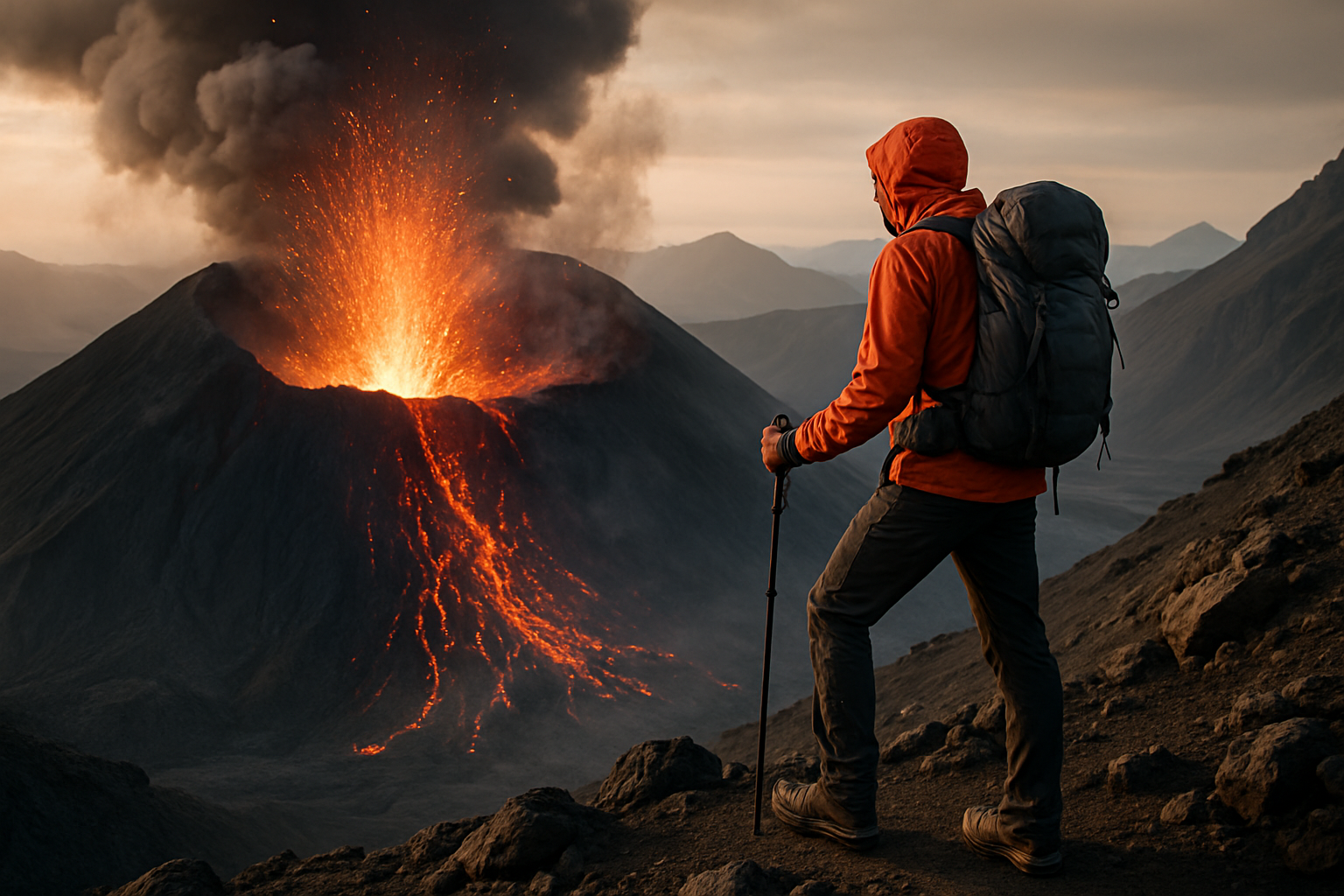Volcano Tourism: Igniting Adventure in Earth's Hotspots
Lava flows, ash clouds, and the raw power of nature draw an increasing number of thrill-seekers to active volcanoes worldwide. This emerging trend in adventure travel, known as volcano tourism, offers intrepid explorers a chance to witness Earth's geological forces up close. From hiking steaming craters to observing fiery eruptions, volcano tourism provides a unique blend of science, adrenaline, and unforgettable landscapes.

In recent years, improved monitoring technology and safety measures have made it possible for more people to experience active volcanoes safely. Countries with significant volcanic activity, such as Iceland, Hawaii, and Indonesia, have developed infrastructure and guided tours to cater to this growing interest. The allure of witnessing nature’s raw power, combined with the increasing popularity of adventure tourism, has fueled the rise of volcano tourism as a niche travel segment.
Types of Volcano Experiences
Volcano tourism encompasses a wide range of activities, catering to various interests and fitness levels. Some popular options include:
-
Hiking and trekking: Many volcanoes offer trails that allow visitors to explore craters, lava fields, and unique flora adapted to volcanic soil.
-
Observation tours: Guided excursions to viewpoints where visitors can safely watch volcanic activity from a distance.
-
Helicopter tours: Aerial views of volcanic landscapes and active eruptions for those seeking a bird’s-eye perspective.
-
Hot spring bathing: Relaxing in naturally heated pools and spas formed by volcanic activity.
-
Lava boat tours: Cruising along coastlines to observe lava flows entering the ocean, creating new land.
-
Volcano boarding: An extreme sport where adventurers slide down ash-covered slopes on specially designed boards.
Each of these experiences offers a unique way to engage with volcanic landscapes and processes, appealing to a diverse range of travelers.
Top Volcano Destinations
While there are numerous volcanic sites around the world, some destinations have become particularly popular among volcano enthusiasts:
Kilauea, Hawaii: One of the world’s most active volcanoes, Kilauea offers visitors the chance to see ongoing lava flows and explore the vast Hawaii Volcanoes National Park.
Mount Etna, Sicily: Europe’s tallest active volcano provides year-round activities, from summer hikes to winter skiing on its ash-covered slopes.
Arenal Volcano, Costa Rica: Though currently in a resting phase, Arenal’s perfect cone shape and surrounding hot springs make it a major draw for eco-tourists.
Mount Bromo, Indonesia: Part of the Tengger massif in East Java, Bromo offers stunning sunrise views and the opportunity to peer into its smoldering crater.
Eyjafjallajökull, Iceland: Famous for its 2010 eruption that disrupted air travel, this Icelandic volcano is now a popular destination for glacier hikes and snowmobile tours.
These locations not only showcase impressive volcanic features but also offer well-developed tourism infrastructure, making them accessible to a wide range of visitors.
The Science Behind the Spectacle
Volcano tourism isn’t just about thrills; it also offers a unique opportunity for scientific education. Many volcanic sites now include interpretive centers and guided tours led by geologists, providing visitors with insights into plate tectonics, magma formation, and the role of volcanoes in shaping Earth’s landscape.
This educational aspect of volcano tourism has gained traction as travelers increasingly seek meaningful and enriching experiences. By understanding the science behind volcanic activity, visitors gain a deeper appreciation for the natural world and the dynamic processes that continue to shape our planet.
Some volcanic destinations have even incorporated citizen science programs, allowing tourists to contribute to volcanic monitoring and research during their visits. These initiatives not only enhance the travel experience but also foster a sense of environmental stewardship among participants.
Volcanic Ventures: Tips for Safe Exploration
-
Always book tours with reputable, licensed operators who prioritize safety and environmental protection.
-
Check current volcanic activity levels and follow all local advisories and restrictions.
-
Wear appropriate gear, including sturdy hiking boots and protective eyewear.
-
Stay on designated paths and maintain a safe distance from active vents and lava flows.
-
Respect the fragile ecosystems of volcanic areas by practicing Leave No Trace principles.
-
Be prepared for rapid weather changes and challenging terrain in volcanic regions.
-
Consider purchasing travel insurance that covers adventure activities and potential disruptions due to volcanic activity.
The Future of Volcano Tourism
As interest in unique and immersive travel experiences continues to grow, volcano tourism is poised for further expansion. However, this growth comes with challenges, including the need to balance tourism development with conservation efforts and local community interests.
Sustainable practices and responsible tourism will be crucial in preserving these natural wonders for future generations. By combining adventure, education, and environmental awareness, volcano tourism has the potential to create lasting positive impacts, igniting a passion for Earth science and conservation in travelers from around the world.





